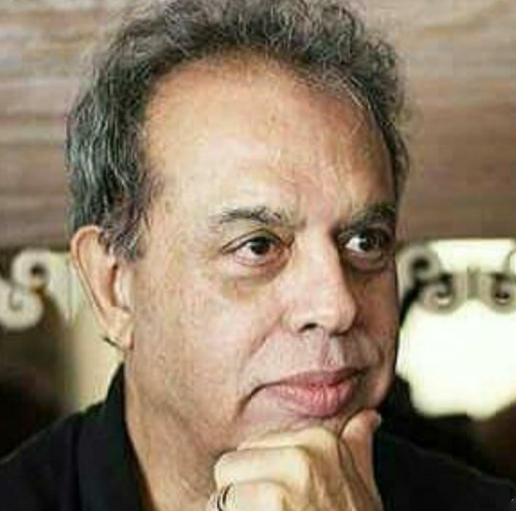
BY MANEK PREMCHAND, AUTHOR & FILM MUSIC HISTORIAN
There is no debate that Ashok Kumar, Nargis and Dilip Kumar have been some of the finestactors to have bloomed in Hindi cinema. In time, they left such large shoes that generations ofactors are unable to fill them. Their imprints are studied and studied again in retrospectives of their films held worldwide.
Consider just a few films of Ashok Kumar: Mamta, EkSaal, Raakhi, Mere Mehboob, Howrah Bridge. Dilip Kumar in Aan, Mughal-e-Azam, Dil Diya Dard Liya, Kohinoor, Ram AurShyam and Azaad. Nargis in Shri 420, Andaaz, Adalat and Mother India. In fact, by the time Mehboob Khan’s Mother India was released, i.e., 1957, Nargis was known to be so good that filmmaker IS Johar cast her in a very different role. She was a suffering Indian mother in a rural setting in Mother India, but in the same year she became a tomboy in an urban milieu, cleaning cars, sticking posters, and much else that men are identified with. The wit that Johar was, he called the film Miss India!
These three gifted artists, Ashok, Nargis and Dilip, came together in Deedar (1951).
Deedar is one of the few films that remain watchable in good quality footage, when even somefilms made much later make you wonder what went wrong in preserving their celluloid. Goodquality makes for more enjoyment, especially since newer films have spoilt us with greatcinematic visuals.
Deedar had wonderful music, with songs like ‘Bachpanke din bhulanadena’, ‘Le jameriduaenleja’, ‘Chamanmeinrehkeveeraana’ and ‘Meri kahaanibhoolnewaale’. Each song, anchored tothe situation, was written beautifully by Shakeel, crafted in notes and instruments with excellenceby Naushad, and the many singers brought their finest vocals to the recording studio. In thiscollaboration, everyone hurled up these songs to get them the escape velocity to rushheavenwards. Today I would like to focus my attention on only one song which was sung byMohammad Rafi, and in fact to just one little detail in the visuals of that song. That song is‘Naseebdarpetereaazmaaneaayahoon’. No harm though if we look at a little of the film’snarrative.
In the film, Dilip and Nargis are childhood friends and at that age are seen riding a horsetogether. They fall off that horse. As a consequence of that accident, Dilip Kumar turns blind, whileshe loses part of her memory, and the two get separated. Later, she teams up with Ashok Kumarand marries him.
Many moons later, Dilip finds out where she lives and approaches her home, harmonium and all.He knows that now she is someone else’s property—for want of another word—but then he is indeep distress too. He wonders if she has compromised her happiness because she has given upher childhood sweetheart as lost.
It is in this backdrop that Shakeel offers words that can be just right for the small window ofopportunity this meeting offers:
Jo naghmensoye hue hainterekhayaalonmein
Unhikoaaj main gakarjagaaneaayahoon
Naseebdarpetereaazmaaneaayahoon…
Shakeel was one of the greatest exponents of the ghazal, the queen of Urdu poetry, andsometimes his words shook your system. This is an example of one such ghazal, listed below infull:
Naseebdarpetereaazmaaneaayahoon
Tujhikoterikahaanisunaaneaayahoon…
Jo naghmensoye hue hainterekhayaalonmein
Unhikoaaj main gakarjagaaneaayahoon…
Baha bhi de merihaalatpeaaj do aansoo
Main apnedilkilagikobujhaaneaayahoon…
Agar wo saamnehote to unse ye kehta
Terehuzoormeinbigdibanaaneaayahoon…
The Visualisation
In this song, Dilip Kumar is shown to play the harmonium with his left hand. This is also true inanother song he played the harmonium in: ‘Husnwaalonkonadil do ye mitadetehain’ (Babul,1950). In the harmonium, the dominant hand plays the keys as the non-dominant hand pushesthe air in the bellows.
Now let’s turn our attention to the sitar, in which the dominant hand uses the plucker, while the non-dominant hand runs up and down the fingerboard. Dilip played the sitar for example, in three songs in Kohinoor (1960); ‘Madhubanmein Radhika naache re’, ‘Dhal chukishaam-e-gham’, and ‘Jaadugarqaatilhaazirhaimeradil’. In those songs, he made his right hand the dominant one.
Clearly, he was comfortable using both hands; he was ambidextrous. He may either have made a conscious effort to try both hands from time to time, situation to situation. Or then he was naturally ambidextrous like that amazing singing-guitarist, Jimi Hendrix, whose playing has been studied by several musicians.
Studies have indicated that left-handed people comprise about 10% of the population. Roughly89% are right-handed, while the remaining 1% are ambidextrous. We do not know how manyambidextrous people, already in a tiny minority, are so gifted that they leave their footprints onthe cement of time. Dilip Kumar is rare enough in his usage of both hands, as can be seen frommany of his films and stage appearances. He is rarer still as a remarkable actor.
Finally, by way of a confession and just for fun, many times while eating out with friends, I havemade low-profile efforts of using my fork in one hand, then in another. Have I succeededsmartly? No. But no one seems to have noticed yet.









